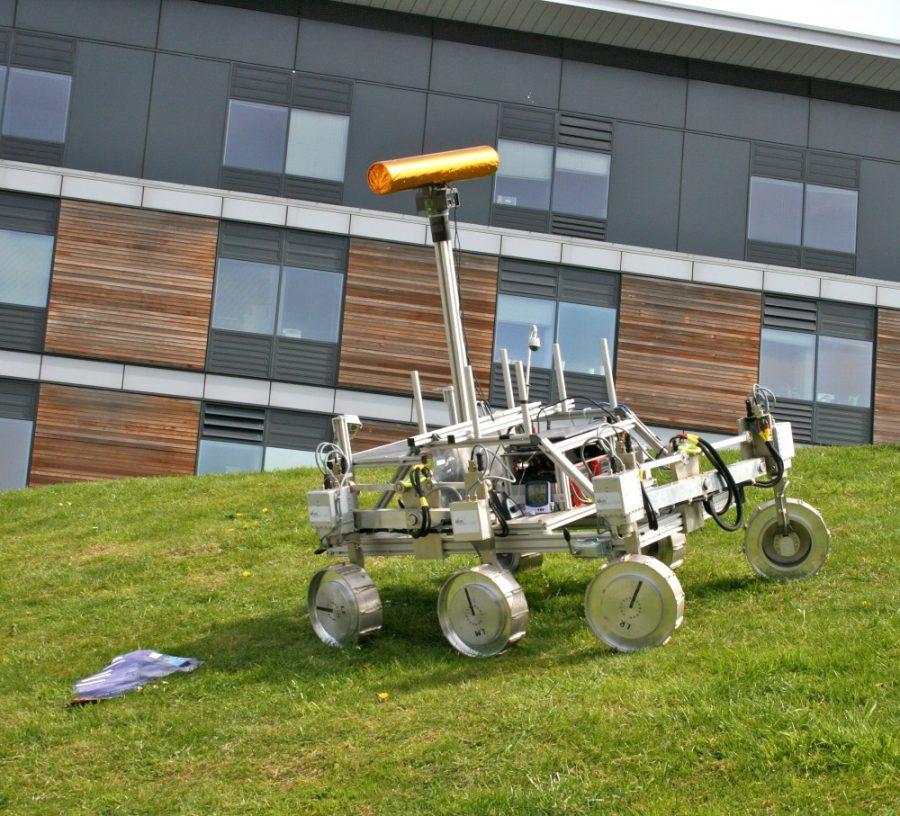A (tiny) snail tale
A research team has found what is possibly the world’s smallest snail.
The new species, Acmella nana, was discovered in northeastern Borneo and measures just 0.02 inches. The Angustopila diminikae, discovered in southern China in September, was previously thought to have been the smallest snail, measuring .03 inches.
A study reporting the finding was published Monday in the journal Zootaxa. According to the study, the research team also described 47 other new species of land snails found in Malaysia, most of them being fairly small as well.
Menno Schilthuizen, a researcher for the Naturalis Biodiversity Center and Leiden University in the Netherlands, said it is probable that the A. nana has gills, and therefore probably lives in wet areas.
According to Schilthuizen, the shell of the A. nana is characteristic of snails that possess gills. Most of the snails found were already dead, so researchers do not yet know where these snails live or what they eat. The study states that the snails were found near areas with limestone, which contains calcium that the snails need for their shells.
The study also describes a species that researchers found with a unique c-shaped shell, called the Ditropopsis davisoni. According to Schilthuizen, the research team does not yet know the function of the shape of the shell.
Rovin rovin rovin
European planetary scientists are building a roving laboratory that they plan to land on Mars’ Oxia Planum in 2018. The ExoMars 2018 rover is currently being developed by the European Space Agency.
The ExoMars 2018 is the first rover to be dedicated to searching for possible life on Mars since the Viking rovers. The ESA decided in October to land the ExoMars 2018 rover at Oxia Planum, an area on the red planet that contains clay deposits and landforms that lead researchers to think that it once contained lakes and rivers. Oxia Planum also features an area that spans 9.3 miles, which researchers believe was once a delta.
According to Jean-Pierre Bibring, an astrophysicist for the Institute of Space Astrophysics, Oxia Planum will provide a profitable space for doing research on the possibility of life on Mars.
“This site guarantees most of what we want in terms of science and engineering,” Bibring said.
According to Bibring, Mars is covered with clay formations, indicating that water was pooled up on the surface of the planet for long periods of time in the past. Bibring also said that he hopes the data the rover collects will help researchers study the changes in composition of the clay on Mars over time.
The ExoMars mission is a collaboration between the ESA and Russian space agency Roscosmos. ExoMars is made up of multiple stages, the first of which is the ExoMars Trace Gas Orbiter, which will launch in 2016, according to the ESA.
The ESA plans to launch the rover to Mars in 2018; the journey to the planet from Earth will take approximately nine months.
Stone cold sexy
Archaeologists in Jersey in the Channel Islands have uncovered stone artifacts that are believed to have been left behind by hunter-gatherers during the last Ice Age. Archaeologists have begun to analyze the artifacts, which they estimate to be at least 14,000 years old.
The research on the artifacts is being done by the Ice Age Project, an archaeological project that has been working on the Les Varines site in Jersey for five years.
“We’re feeling reasonably confident at the moment that what we’ve got fits into the broader idea of … Magdalenian art,” said Chantal Conneller, the co-director of the Ice Age Project, in an interview with the BBC. The Magdalenians were a group of hunter-gatherers who recolonized Europe at the end of the last Ice Age, 16,000-13,000 years ago.
“I feel reasonably confident it dates to sometime between 15,000 and 14,500 years ago,” Conneller said.
Archaeologists will work to find the exact time period of Les Varines by analyzing and dating pieces of bone from the site. If the estimated timing of the site is correct, it would mean that the carvings predate the earliest known art found in the United Kingdom.
The artifacts include stone engravings similar to those of the same time period from continental Europe, but these are the first to be found in the British Isles, according to the research team.
Dr. Silvia Bello of the Natural History Museum, London, is currently analyzing the stone fragments. According to Bello, the stone artifacts are not native to the site and are shown to have been carved by stone tools.
Archaeologists can use these artifacts to determine if there is any cultural similarity between the Les Varines site and other Magdalenian sites in Europe.
Follow Emily Hedges on Twitter.









